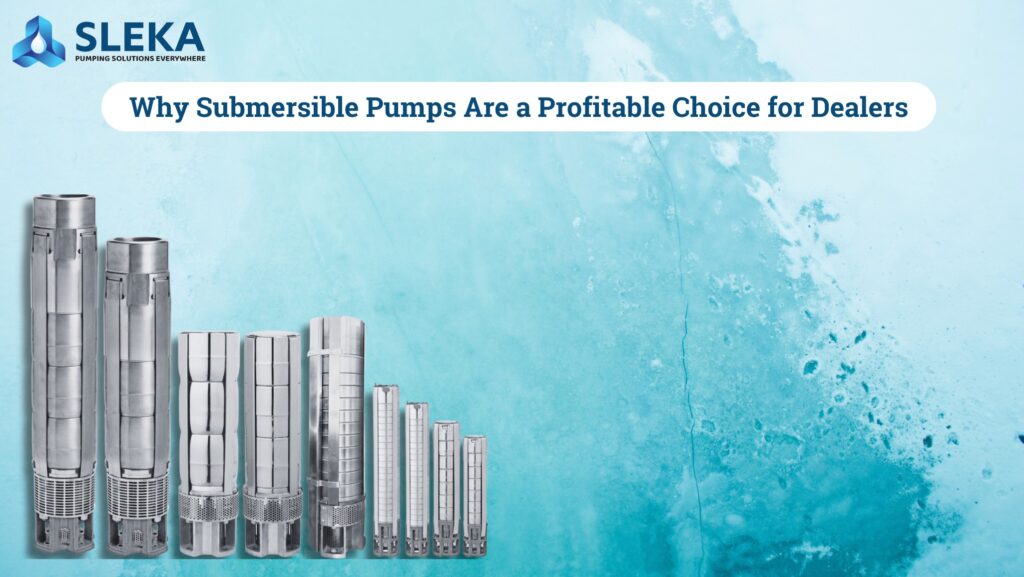SLEKA Submersible Pumps is Profitable choice for Dealers
Submersible pumps have become essential tools in various industries, from agriculture to municipal water systems. Their ability to efficiently move water from deep underground makes them invaluable, particularly in regions where surface water is scarce. In this blog post, we will explore profitable submersible pumps and how you can maximize their efficiency and profitability. Sleka, a leader in submersible pump specialization, offers a range of products tailored to meet diverse needs.
Understanding Profitable Submersible Pumps
Submersible pumps are designed to be submerged in the fluid they are pumping. This design allows for efficient operation as the motor is cooled by the liquid, which also prevents the pump from overheating. When selecting a profitable submersible pump, consider factors such as flow rate, head height, and energy efficiency. Sleka provides a comprehensive range of submersible pumps that cater to different applications and requirements.
Choosing the Right Submersible Pump
-
Assess Your Needs: Before purchasing a submersible pump, assess your specific requirements. This includes the volume of water you need to move, the depth of the water source, and the distance the water needs to be pumped. Sleka’s expert team can help you determine the best model for your application.
-
Energy Efficiency: Look for pumps that are energy-efficient to reduce operational costs. Energy-efficient pumps can significantly lower electricity bills over time, making them more profitable in the long run. Sleka specializes in high-efficiency models that optimize energy consumption.
-
Material Considerations: The materials used in submersible pumps affect their longevity and performance. Pumps made from corrosion-resistant materials are ideal for harsh environments. Sleka offers submersible pumps with durable materials to withstand various conditions.
-
Regular Maintenance: To ensure your submersible pump operates at peak efficiency, regular maintenance is crucial. This includes checking for wear and tear, cleaning filters, and monitoring performance metrics. A well-maintained pump will have a longer lifespan and provide better returns on investment.
Maximizing Pump Efficiency
-
Proper Installation: Proper installation is vital for maximizing the efficiency of your submersible pump. Ensure that the pump is installed at the correct depth and angle for optimal performance. Sleka provides installation guides and support to help customers achieve the best results.
-
Utilize Variable Frequency Drives (VFDs): Implementing VFDs allows you to control the speed of your submersible pump based on real-time demand. This not only enhances efficiency but also reduces wear and tear on the pump. Sleka can assist you in integrating VFD technology into your pumping system.
-
Monitor Performance Metrics: Keep track of key performance metrics such as flow rate, pressure, and energy consumption. Monitoring these metrics can help identify issues before they become significant problems. Sleka’s range of monitoring solutions can facilitate this process.
-
Consider Alternative Energy Sources: Solar-powered submersible pumps can be a sustainable option, especially in remote areas where electricity supply is unreliable. Sleka offers solar submersible pumps that harness renewable energy for cost-effective operation.
The Role of Automation
-
Automation for Efficiency: Automating your pumping system can lead to significant savings and improved efficiency. Automated systems can adjust operation based on water levels or demand, ensuring optimal performance without manual intervention.
-
Data Analytics: Utilizing data analytics tools can provide insights into your pumping system’s performance and help optimize operations further. By analyzing data trends, you can make informed decisions that enhance profitability.
FAQ Section
FAQ #1: What are the advantages of using submersible pumps?
Submersible pumps offer several advantages, including high efficiency, reduced noise levels, and the ability to work in deep-water applications. They are also less prone to cavitation compared to surface pumps.
FAQ #2: How can I determine the right size submersible pump for my needs?
To determine the right size, consider factors such as flow rate requirements, total dynamic head (the height water must be pumped), and the specific gravity of the fluid being pumped.
FAQ #3: How often should I perform maintenance on my submersible pump?
Regular maintenance is recommended at least once a year, but if your pump operates continuously or under harsh conditions, more frequent checks may be necessary.
FAQ #4: Can I use submersible pumps for irrigation?
Yes, submersible pumps are widely used in irrigation systems to draw water from wells or other sources efficiently.
FAQ #5: What makes Sleka a reliable choice for submersible pumps?
Sleka specializes in high-quality submersible pumps tailored to various applications. Their commitment to innovation, durability, and customer support makes them a trusted choice in the industry.
Wrapping Up
This blog shares a lot about “Profitable submersible pumps.” To know more about solar pumps in agriculture, visit Sleka. To know more about Noryl impellers and diffusers, do visit Nobtech.
By following these tips and leveraging the expertise of Sleka in submersible pump specialization, you can enhance the profitability and efficiency of your pumping operations while ensuring sustainability and reliability in your water management solutions.


